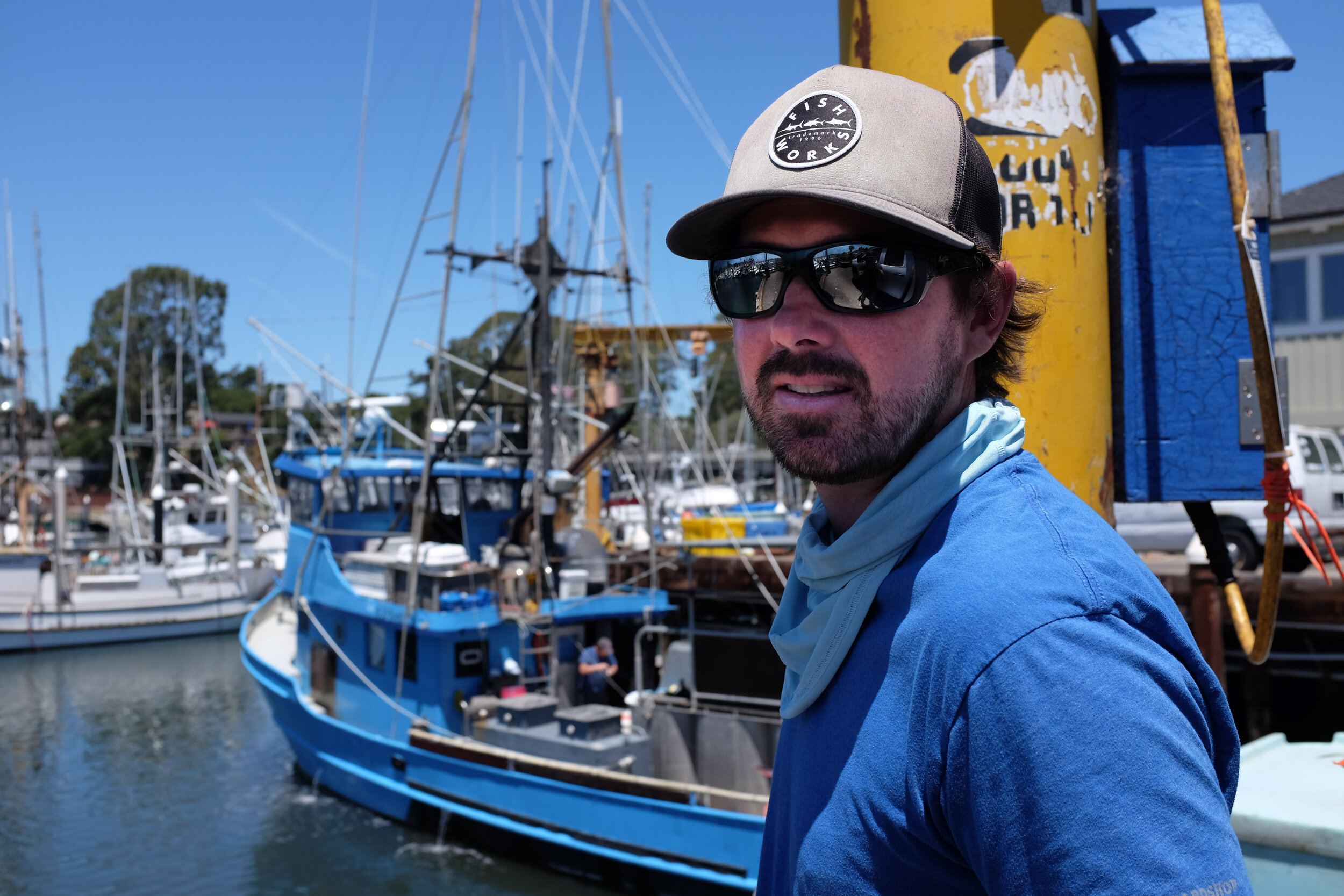Blake Anderson, Santa Cruz Harbor
Santa Cruz Harbormaster
Life doesn’t always go as planned. Santa Cruz native Blake Anderson earned a Master of Fine Arts in photography from the prestigious Parsons School of Design in New York City. He planned to become a teacher but upon entering the workforce during the Great Recession he had to pivot and went from lifeguard, to EMT, firefighter and finally to a member of the Santa Cruz Harbor Patrol in 2009.
More than a decade later Anderson became the harbormaster at just 37 years old in February 2020. Soon thereafter the Covid-19 pandemic struck, and he was forced to pivot again managing a harbor amidst a crisis.
But as a quintessential waterman — surfer, lifeguard and fisherman — Anderson knows you can’t always fight the tide, but must find opportunity while being pushed in a different direction. He sees this shared resourcefulness in the Santa Cruz commercial fishing community, facing uncertainty, and at times adversity, but always with the wherewithal to persevere.
“Fishing is not what it once was in the Monterey Bay. It’s a difficult profession, but in addition to being a livelihood, it is our identity,” Anderson says. “I see fishing as a really important cultural activity here in Santa Cruz.”
While the shelter-in-place put in effect to stem the spread of the coronavirus brought most economic activity to a standstill, commercial fishing is an essential business and one Anderson continued to support with a skeleton crew.
“Every decision I make, every action that we take I have to ask myself, ‘does this benefit fishermen?’” he says. “I’m happy to be in a position to shape some of the policy to help people maintain the commercial fishing lifestyle and be successful at it.”
For Anderson, commercial fishing doesn’t take away from other activities at the harbor, but adds to it. Working waterfronts don’t just benefit those working, but attract visitors wanting to buy fresh fish or who just want to see those who have created a life at sea.
“People who come and visit people always walk around the commercial fishing area and see the boats,” Anderson says. “We need to maintain the working waterfront — it’s good for our harbor in so many ways.”

